Regarded as one of Europe’s most elegant cities, Vienna, Austria’s captivating capital, boasts a unique historical texture, cultural richness, and artistic heritage, attracting tourists worldwide. With its Baroque architectural marvels, world-class museums, magnificent palaces, and vibrant music scenes, the city is a paradise for art lovers and history enthusiasts.
Among the places to visit in Vienna are historical monuments, modern art galleries, green parks, and tranquil cafes and restaurants. From Schönbrunn Palace to Belvedere Palace, from Hofburg Imperial Palace to Prater Park, Vienna narrates a different story at every corner. World-renowned music venues like the Vienna State Opera highlight the city’s artistic side, while shopping streets like Mariahilfer Straße reflect modern Vienna’s dynamism.
During your visit to Vienna, besides exploring these historic and cultural sites, don’t forget to stroll through the city’s streets, witness the daily life of Viennese people, and savor local delicacies. With each corner offering a new discovery, Vienna provides its visitors with unforgettable memories and unique experiences.
Places to Visit in Vienna
Hofburg Palace
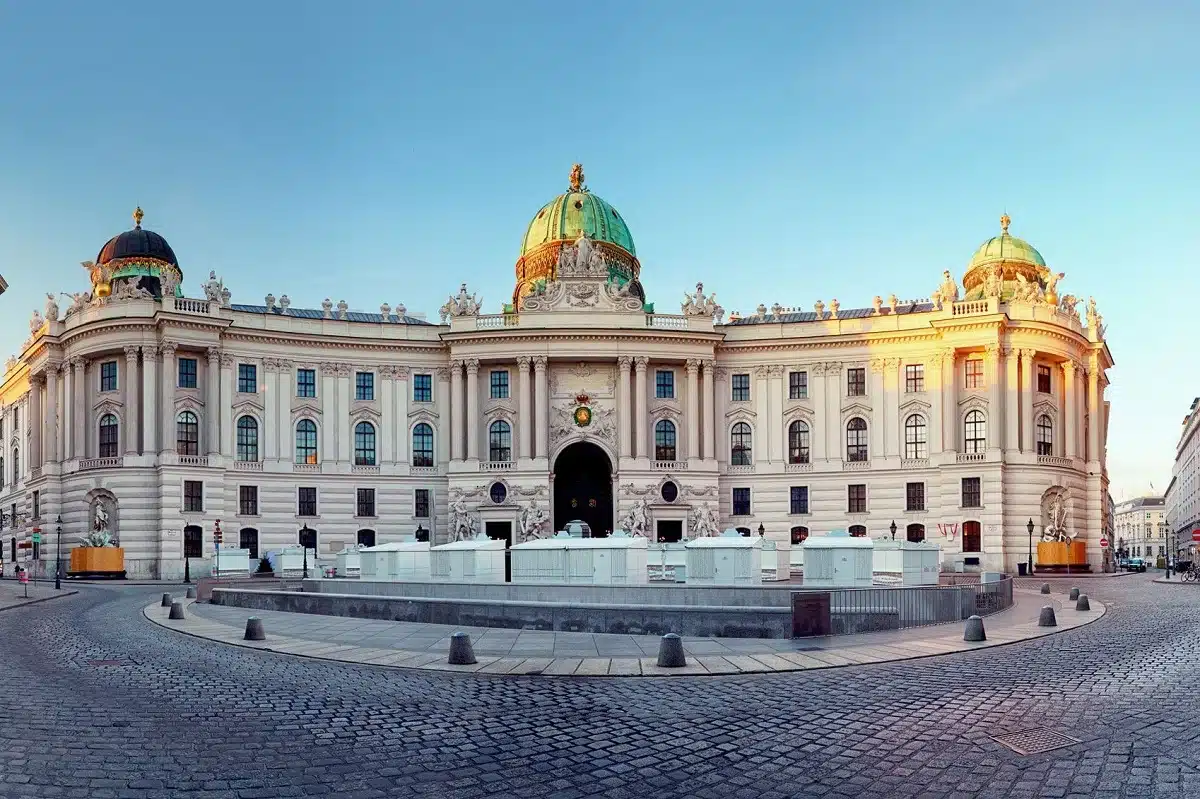
Hofburg Palace is a grand palace complex located in Austria’s capital, Vienna, and has historically served as the residence for the Habsburg dynasty. Today, it is used as the official residence of the President of Austria and stands as a significant cultural and historical center of the country.
History
- Construction of Hofburg Palace began in the 13th century and was continuously expanded and remodeled over several centuries.
- The palace served as the main residence for the Habsburg dynasty and maintained its significance until the fall of the Austro-Hungarian Empire.
- Over the years, the palace expanded into a vast complex, reflecting various architectural styles through additions and reconstructions.
Architecture and Key Sections
- Imperial Apartments: This section includes the private living quarters of the Habsburg rulers and is open to visitors.
- Sisi Museum: Dedicated to Empress Elisabeth of Austria (Sisi), this museum narrates her life and era.
- Silver Collection: This part showcases valuable tableware and kitchen items used by the Habsburg dynasty.
- National Library: Austria’s largest library, this section hosts an immense book collection and boasts impressive architecture.
- Spanish Riding School: This institution is renowned for breeding and training Lipizzan horses, with its performances gaining worldwide fame.
- Heldenplatz (Heroes’ Square): An integral part of the palace complex, this square has witnessed numerous historical events.
With its rich history, magnificent architecture, and cultural significance, Hofburg Palace is one of Vienna’s prime tourist attractions. Reflecting Austria’s history, art, and culture, this structure offers visitors a unique experience.
Schönbrunn Palace
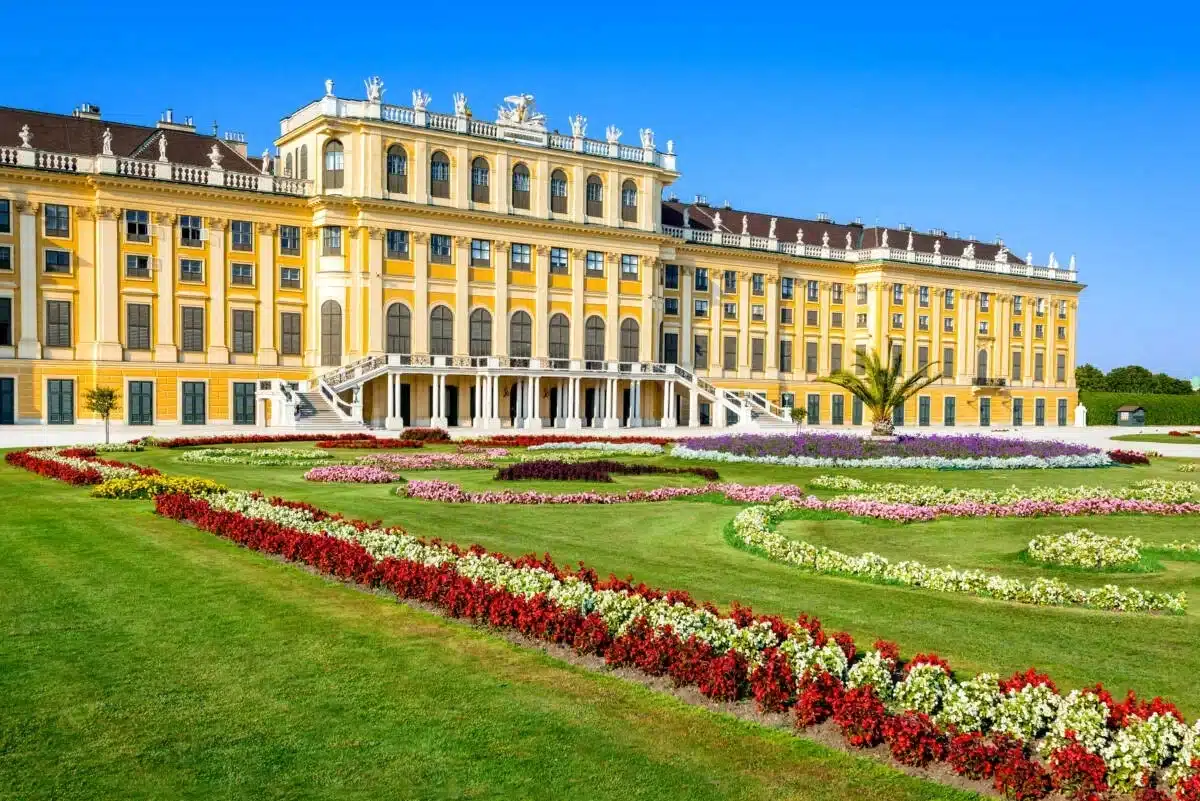
Schönbrunn Palace, located in Austria’s capital Vienna, is a renowned palace listed on the UNESCO World Heritage Site. As one of the finest examples of Baroque architectural style, this palace holds a significant place in Austrian history and is now one of Vienna’s most visited tourist attractions.
History
- Construction of Schönbrunn Palace began at the end of the 17th century during the reign of Emperor Leopold I.
- The palace was expanded and reached its current splendor particularly during the reign of Emperor Franz I and his wife, Empress Maria Theresa.
- It served as the summer residence of the Habsburg dynasty and witnessed key decisions during various periods of the Austro-Hungarian Empire.
Architecture and Key Sections
- Palace Building: The palace, with its 1441 rooms, includes lavishly decorated halls, the private apartments of the emperor and empress, and a magnificent chapel.
- Great Gallery: One of the most splendid halls in the palace, the Great Gallery was used for state receptions and balls.
- Maria Theresa’s Rooms: These rooms, belonging to Empress Maria Theresa, reflect her lifestyle and the aesthetic of her era with their furniture and decorations.
- Palace Gardens: The extensive gardens are famous for various statues, fountains, and meticulous garden designs. They also house notable structures like the Gloriette, Palm House, and the zoo.
- Gloriette: Situated at the highest point of the gardens and offering a magnificent view, the Gloriette was built as a monument of victory.
- Schönbrunn Zoo: Part of the palace complex, this zoo is one of the oldest in the world and hosts a variety of animal species.
Schönbrunn Palace is a vital symbol reflecting Austria’s imperial past and cultural heritage. Its magnificent architecture, rich history, and expansive gardens offer a unique beauty that attracts millions of visitors each year.
St. Stephen’s Cathedral (Stephansdom)
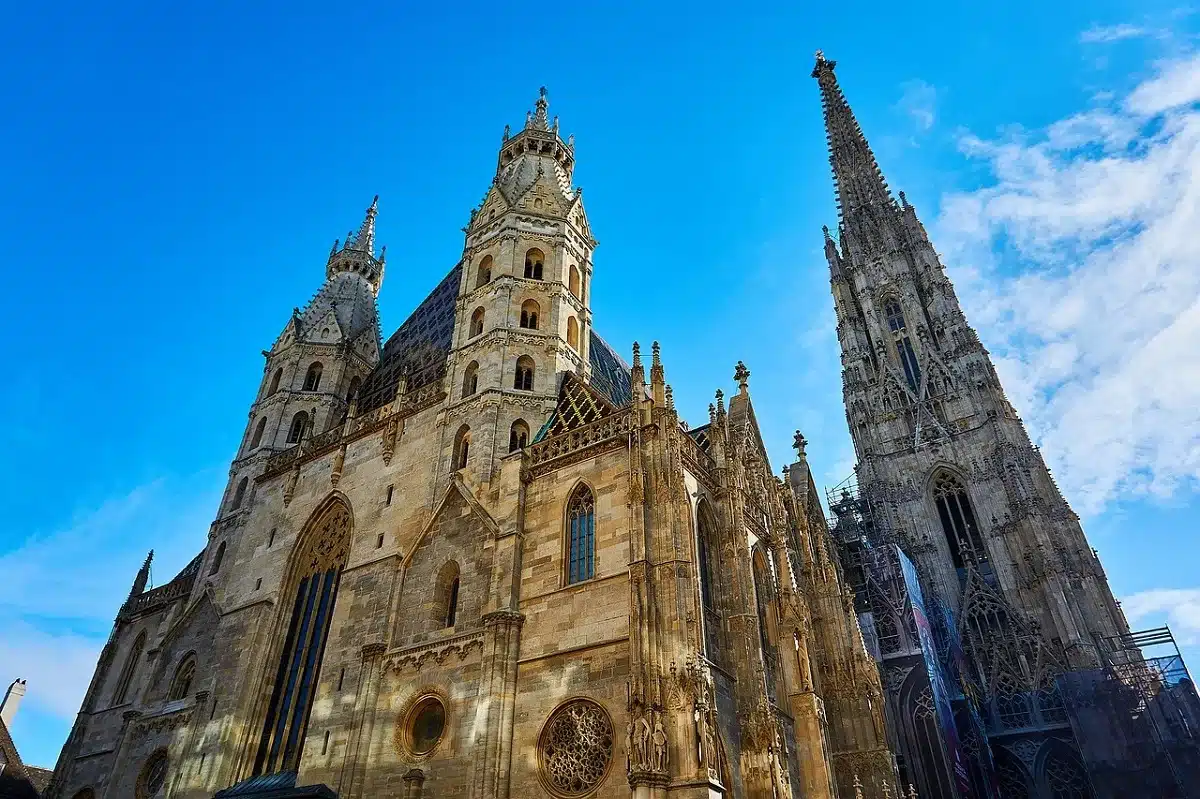
St. Stephen’s Cathedral, also known as Stephansdom, is a significant religious structure in Austria’s capital, Vienna, and has become an emblem of the city. This medieval Gothic cathedral is located in Vienna’s historic center and is renowned for both its architectural beauty and historical significance.
History
- The construction of the cathedral began in the 12th century, with various sections completed over different eras.
- Initially built in the Romanesque style, the cathedral was expanded and transformed with Gothic elements in subsequent centuries.
- In 1945, during World War II, the cathedral suffered severe damage but was restored and returned to its original splendor after the war.
Architecture and Key Features
- Towers: The South Tower of Stephansdom, standing at 136 meters, is Austria’s tallest church tower and the cathedral’s most prominent feature. The North Tower was never completed as originally planned.
- Roof: The cathedral’s roof is decorated with colorful tiles forming geometric patterns, a significant part of Vienna’s panoramic view.
- Interior: The interior of the cathedral is adorned with massive columns, statues, and stained glass windows, hosting numerous important artworks.
- Bishops’ Crypt: This crypt houses the tombs of many Viennese bishops and significant religious figures.
- Altars: There are several altars within Stephansdom, including the high altar and a series of side altars.
Cultural and Religious Significance
- Stephansdom is a crucial center for the Austrian Catholic Church and hosts numerous religious ceremonies and events.
- The cathedral is also seen as a vital part of Vienna’s historical and cultural identity, attracting visitors from the local community and around the world throughout the year.
These features make St. Stephen’s Cathedral more than just a place of worship but a symbol of Vienna’s cultural and historical heritage.
Belvedere Palace
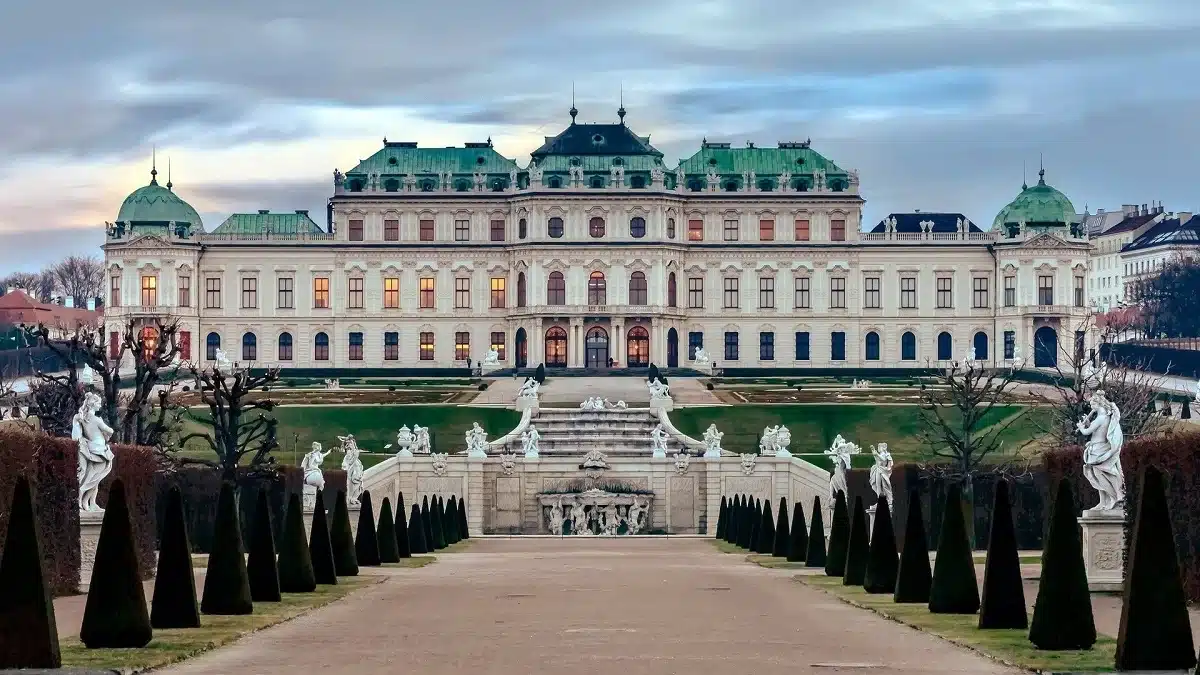
Belvedere Palace is a historic palace complex located in Vienna, Austria, representing a magnificent example of Baroque architecture. It consists of two main buildings, Upper and Lower Belvedere, connected by expansive and grand gardens. Initially constructed as a summer residence for Prince Eugen von Savoyen in the early 18th century.
Upper Belvedere
- The Upper Belvedere is situated on the higher part of the complex and offers a spectacular view.
- It was originally used as Prince Eugen’s reception and entertainment area.
- Today, it serves as an art museum, notably housing works by Gustav Klimt, including his world-famous painting “The Kiss” among its most critical pieces.
Lower Belvedere
- The Lower Belvedere, located at a lower elevation, originally served as Prince Eugen’s residential quarters.
- This building, showcasing exquisite examples of Baroque architecture and decoration, now hosts various art exhibitions.
Orangery and Palace Stables
- The complex also includes an Orangery and Palace Stables, which have been transformed into venues for art exhibitions and events over time.
Belvedere Gardens
- The gardens between the palace buildings are a striking example of Baroque garden art, featuring symmetric arrangements, sculptures, and water features.
- They are a popular relaxation and walking spot for both locals and tourists.
Cultural and Historical Significance
- Belvedere Palace stands as one of Austria’s most important historical and cultural sites.
- With its rich collections in art, history, and architecture, the palace is one of Vienna’s key tourist attractions.
- It also played a vital role in Austria’s modern history, notably with the signing of the Austrian State Treaty in 1955, marking the country’s regained independence.
Belvedere Palace offers both visual and historical feasts to its visitors, enriching Vienna’s cultural heritage.
Albertina
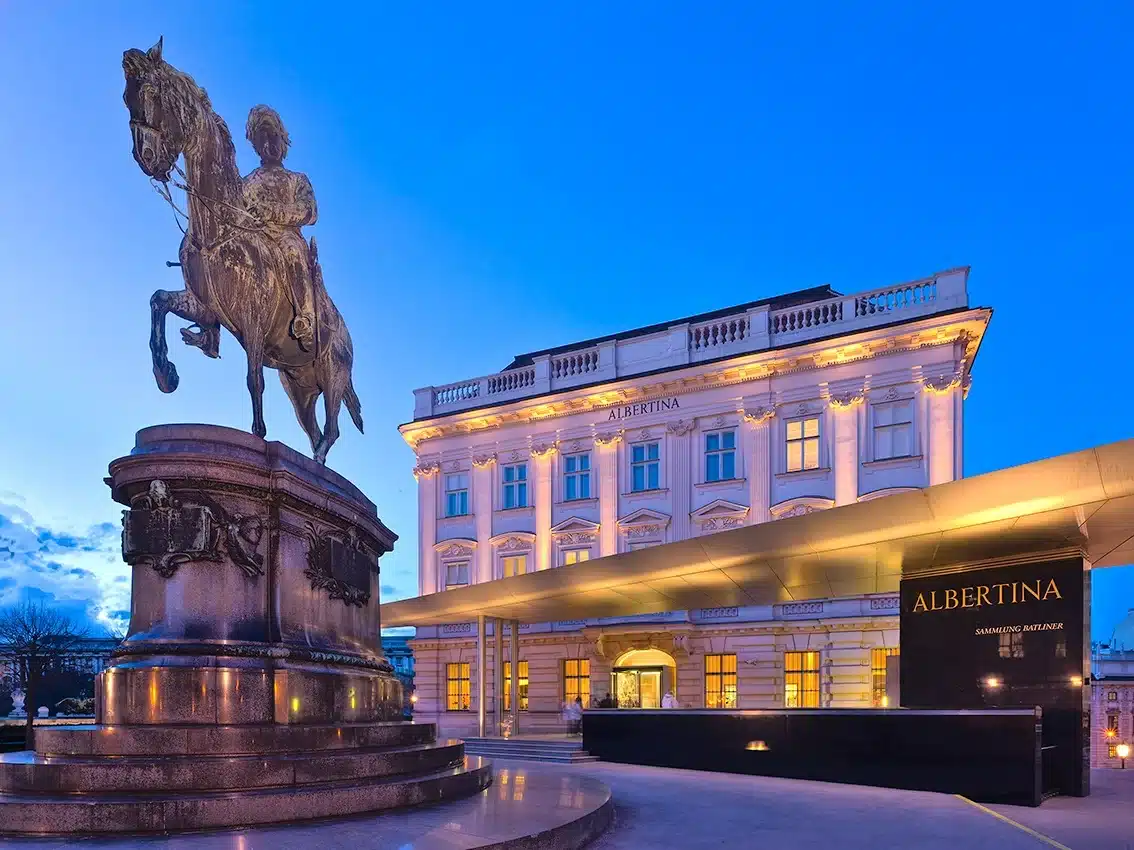
Albertina is a renowned art museum located in Austria’s capital, Vienna, hosting one of the world’s most important graphic arts collections. Situated within the historic Albertina Palace, the museum exhibits both classical and modern artworks.
History
- Albertina owes its name to its founder, Duke Albert of Saxe-Teschen, an art collector who laid the foundation for this collection in the late 18th century.
- The palace was originally constructed in 1745 as part of Vienna’s fortifications and later expanded to serve as a residence for Duke Albert and his wife, Marie Christine.
- Albertina underwent an extensive restoration and expansion process in the early 2000s, transforming it into a venue that also showcases modern art.
Collection and Exhibitions
- The collection comprises approximately 65,000 drawings and over 1 million prints, including works by Renaissance masters like Dürer, Raphael, Michelangelo, da Vinci, as well as pieces by modern artists such as Schiele, Cézanne, Klimt, Picasso, and many others.
- Besides its permanent collection, Albertina organizes temporary exhibitions and events, offering visitors a broad perspective on various art movements and artists.
Architecture and Features
- The Albertina Palace blends classical and modern architectural elements. Its historical facade was preserved during the restoration and expansion, while contemporary architectural additions were made.
- The museum’s roof terrace offers a panoramic view of Vienna, making it a popular spot for visitors.
- Albertina also includes a library, event halls, a restaurant, and a shop.
Cultural and Educational Activities
- Albertina hosts a variety of cultural and educational activities, including art education programs, guided tours, lectures, and workshops.
Albertina Museum is regarded as one of Vienna’s most significant cultural institutions, celebrated for its rich collection and history, and visited by art enthusiasts from around the globe annually.
Prater Park

Prater Park is a vast and historic public park located in Austria’s capital, Vienna. Cherished by both locals and tourists, the park is known for its green spaces, amusement facilities, and cultural activities. Prater stands as one of Vienna’s most significant recreation and entertainment areas, playing a crucial role in the city’s social life.
History
- Prater was once a hunting ground for the Habsburg dynasty and was opened to the public in 1766.
- Since then, the park has evolved with various amusement areas, cafes, restaurants, and sports facilities.
Key Features and Activities
- Wiener Riesenrad: Prater Park’s most iconic attraction is the giant Ferris wheel, Wiener Riesenrad, built in 1897, offering a romantic experience against the backdrop of the cityscape, especially in the evening.
- Amusement Park (Wurstelprater): Located within the park, Wurstelprater features a variety of amusement rides, roller coasters, public playgrounds, and entertainment facilities, making it a popular destination for children and families.
- Green Spaces: Prater’s extensive green areas and tree-lined paths provide an ideal setting for nature walks, picnics, and sports activities.
- Hauptallee: The park’s main avenue, Hauptallee, is heavily utilized by joggers, cyclists, and walkers.
- Prater Museum: This museum within the park exhibits the history and amusement culture of Prater.
- Stadium and Sports Facilities: Prater also accommodates various sports facilities and large sports venues like Ernst Happel Stadium.
Events
- Prater Park hosts numerous festivals, concerts, and cultural events throughout the year, highlighting its significance in Vienna’s social and cultural life.
Prater serves as one of Vienna’s essential green spaces, offering a fun and relaxing environment amidst nature in the heart of the city. It is an excellent place to explore both its history and natural beauty.
Kunsthistorisches Museum (Museum of Art History)
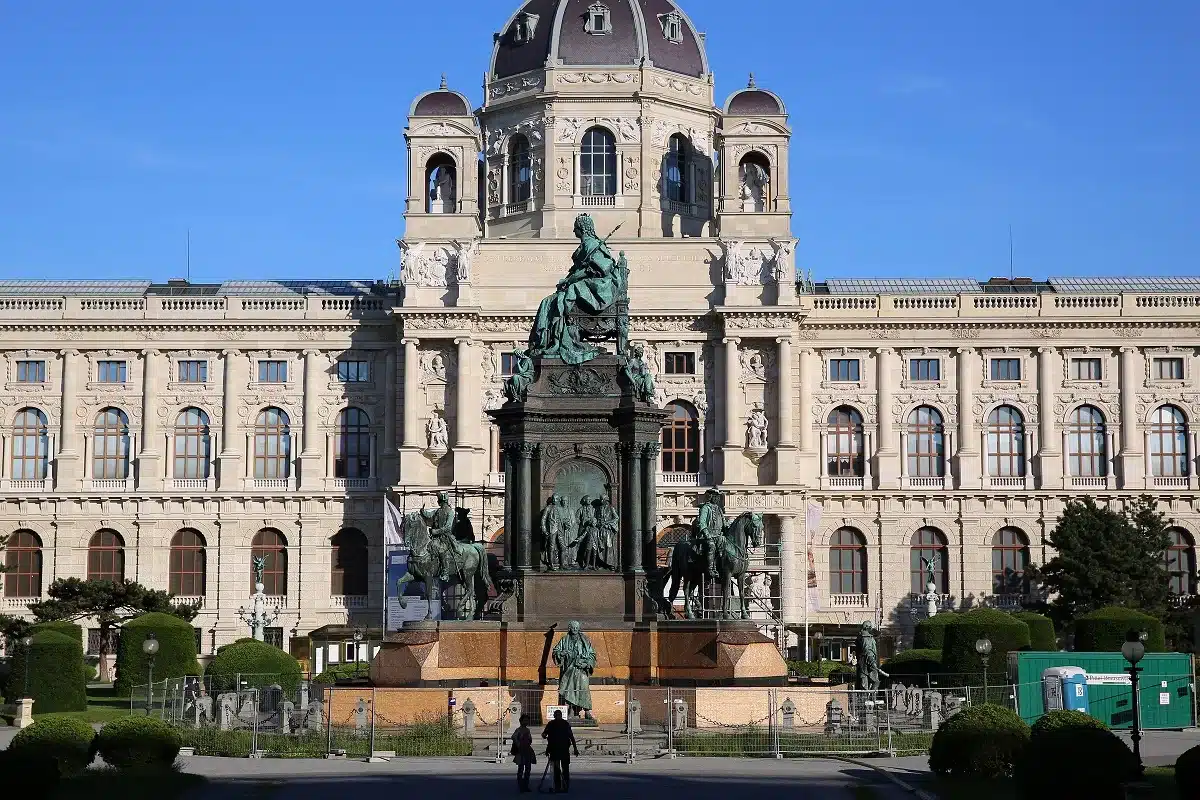
Kunsthistorisches Museum, located in Austria’s capital Vienna, is a renowned museum that hosts a significant global art collection. Opened in 1891, the museum is particularly recognized for housing the art collections of the Habsburg dynasty, including works from the Baroque and Renaissance periods, as well as collections of Ancient Egyptian and Near Eastern art.
Building and Architecture
- The Kunsthistorisches Museum is situated on Vienna’s Ringstraße boulevard, facing its sister institution, the Natural History Museum.
- Constructed in the style of the Italian Renaissance, the museum building is adorned with statues and frescoes representing various arts on its exterior.
- Inside, the museum captivates with its rich decorations, large marble columns, and impressive ceiling frescoes.
Collections and Exhibitions
- Painting Collection: The museum hosts an extensive array of works by Flemish and Italian Renaissance painters. Masterpieces by artists like Bruegel, Vermeer, Rembrandt, Dürer, Tiziano, and Velázquez are among the collection’s most valued items.
- Egyptian and Near Eastern Collection: This section includes Ancient Egyptian artifacts, mummies, and archaeological finds.
- Antiquities Collection: Exhibits in this section feature sculptures, jewelry, and utensils from Greek and Roman times.
- Coin and Medallion Collection: This collection encompasses historical coins and medallions, along with precious stones and seals.
Events and Amenities
- The Kunsthistorisches Museum regularly organizes special exhibitions and art-related events.
- It also houses a café, a restaurant, and a bookstore, providing spaces for visitors to relax and spend time after exploring the art collections.
The Kunsthistorisches Museum is a must-visit destination in Vienna for art enthusiasts, offering a unique experience in art history with its rich collection and magnificent architecture. The museum serves as a testament to Austria’s cultural heritage.
Leopold Museum
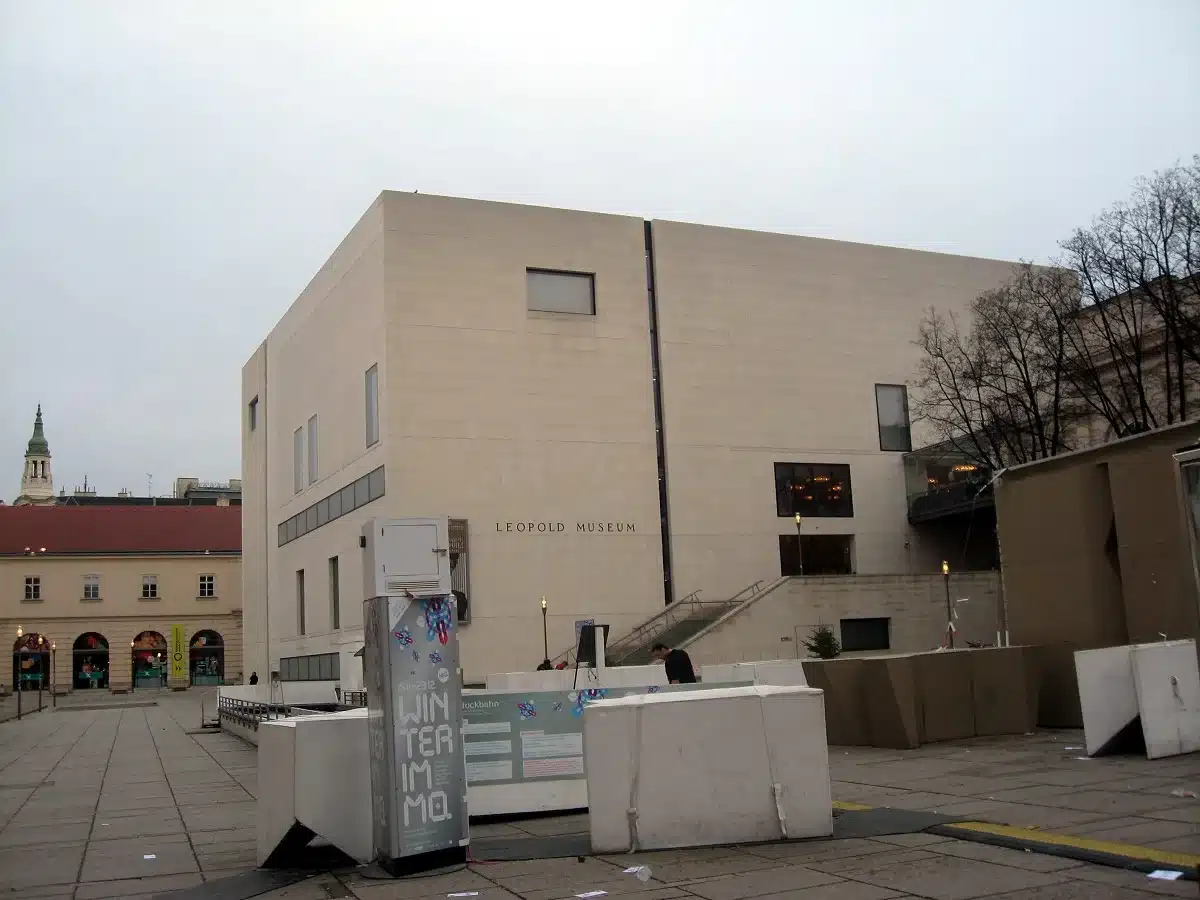
Leopold Museum, located in Austria’s capital Vienna, is a significant art museum focusing primarily on early 20th-century Austrian art. Situated within the MuseumsQuartier cultural complex, it hosts one of the most comprehensive collections of Austrian modern art. The museum is named after its founders, Elisabeth and Rudolf Leopold, and is based on the art collection they amassed throughout their lives.
Collection and Exhibitions
- Egon Schiele: The Leopold Museum boasts the world’s largest collection of Egon Schiele’s works. His pieces reflect his unique style and the artistic movements of his era. The museum displays a broad range of his paintings, drawings, and watercolors.
- Gustav Klimt: The museum also houses significant works by Gustav Klimt, considered a leading figure in Viennese modernism. His artworks introduce a new perspective to the art understanding of the period.
- Österreichische Moderne: The Leopold Museum features works by Oskar Kokoschka, Richard Gerstl, and many other Austrian artists, offering a comprehensive view of Austria’s modern art movement.
- Wiener Werkstätte: Additionally, the museum exhibits pieces by members of the Wiener Werkstätte (Vienna Workshop), shedding light on the design and decorative art movements of the time.
Architecture and Amenities
- The Leopold Museum boasts modern and minimalist architecture. Its exterior is clad with light-colored stone, and its interiors are designed to be spacious, bright, and airy.
- The museum includes a café and a shop catering to visitors, providing spaces for relaxation and shopping after exploring the artworks.
The Leopold Museum offers a unique experience to art enthusiasts by housing one of the most vital collections of Austrian modern art, particularly Viennese modernism. Besides its artistic value, the museum also contributes significantly to Vienna’s cultural life with its architecture.
Vienna State Opera (Wiener Staatsoper)
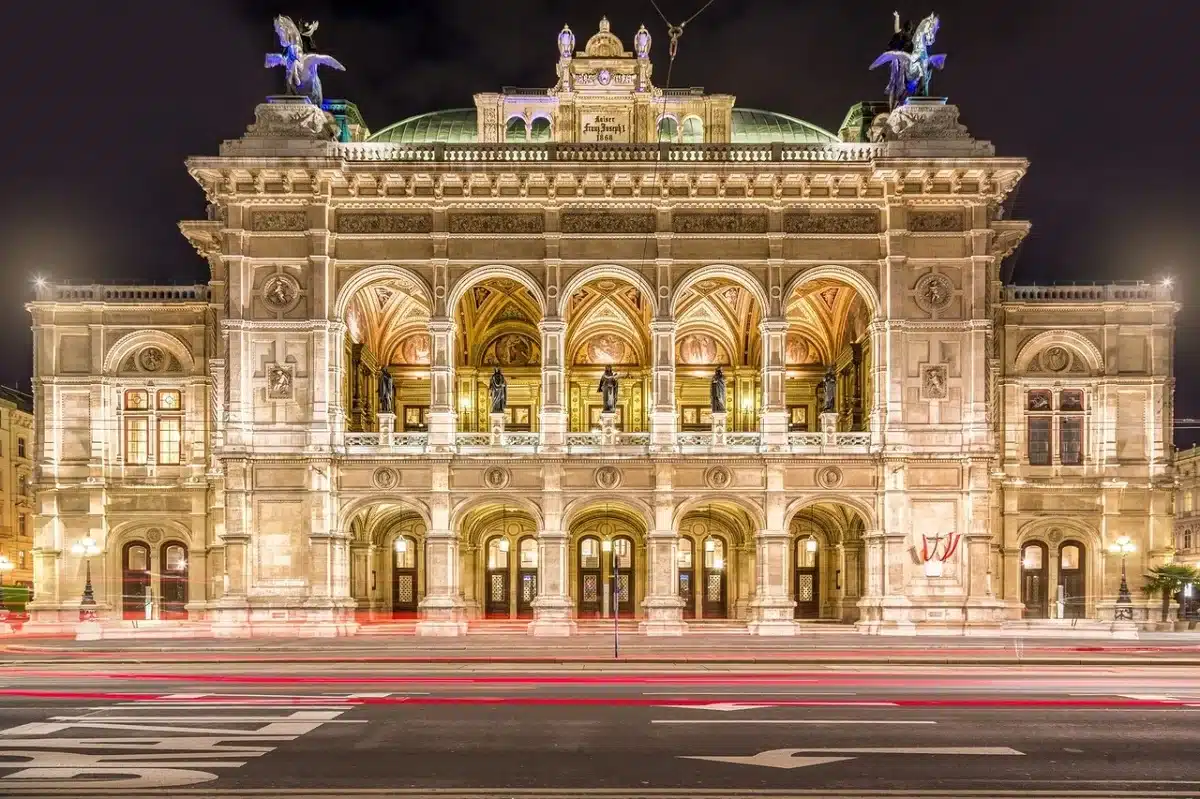
Vienna State Opera (Wiener Staatsoper), located in Austria’s capital, Vienna, is a world-renowned opera house that opened in 1869. This historic edifice is at the heart of Vienna’s cultural life, known for its high-caliber art performances.
History
- The Vienna State Opera was originally constructed under the command of Emperor Franz Joseph. The opera house was inaugurated with a performance of Mozart’s “Don Giovanni.”
- During World War II, the building sustained significant damage but was restored to its former glory and reopened post-war.
Architecture
- The opera house features Neo-Renaissance architecture with ornate statues, friezes, and decorative details on its exterior.
- The interior includes a magnificent staircase, several themed halls, and an audience hall adorned with rich decorations.
Performances and Repertoire
- The Vienna State Opera hosts over 300 performances annually, offering a broad repertoire ranging from classic operas to ballets and modern works.
- World-renowned orchestras, choirs, and soloists perform here, along with guest artists from around the globe.
Significance and Events
- The Vienna State Opera is considered one of the most prestigious venues in Austria and the global opera scene.
- The opera house also hosts special events like the Opera Ball, a significant occasion on Vienna’s social calendar and internationally renowned.
Access and Visits
- The Vienna State Opera offers guided tours for tourists, providing insights into the building’s history, architecture, and operatic activities.
- “Standing tickets” are popular for providing an affordable opportunity to experience opera performances, making opera accessible to a broader audience.
The Vienna State Opera, with its rich history, magnificent architecture, and acclaimed art performances, is a must-visit landmark for art enthusiasts in Vienna.
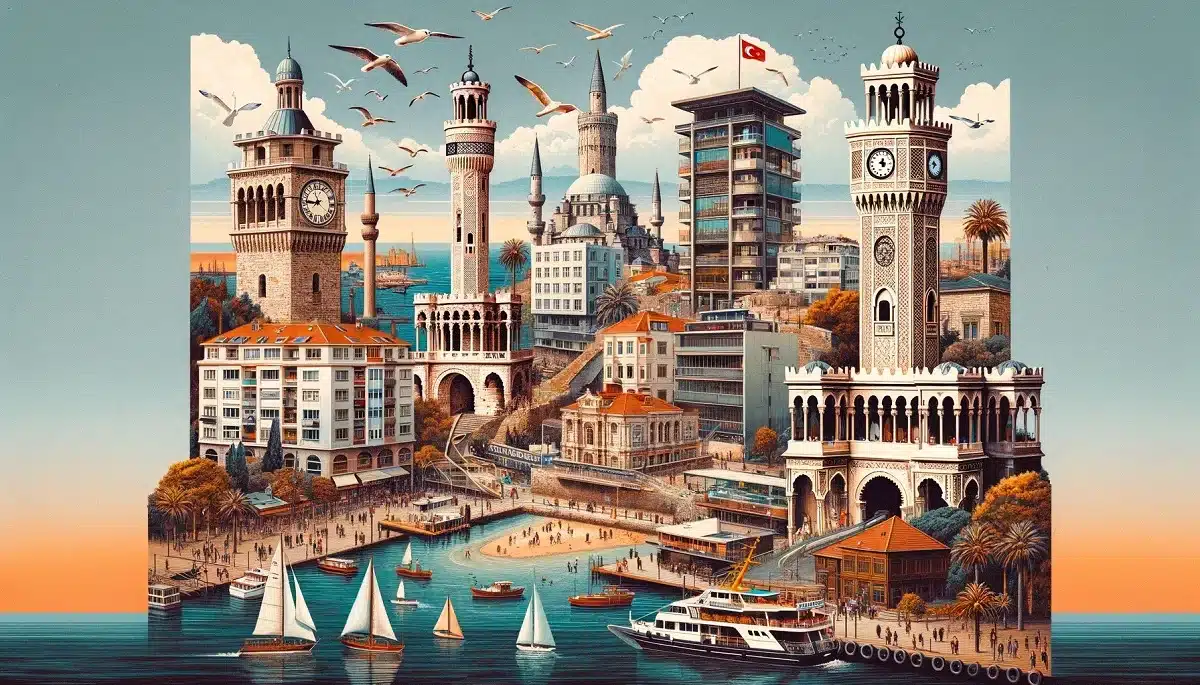
Donaukanal (Danube Canal)
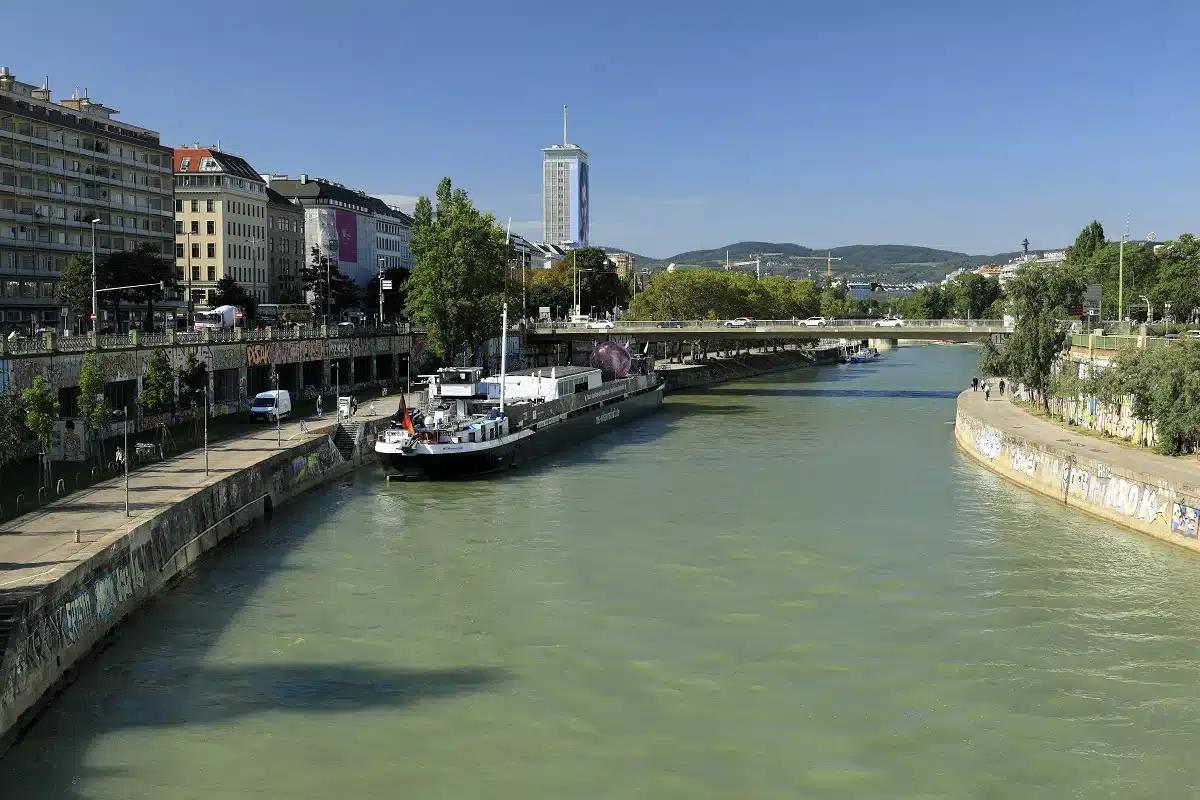
Donaukanal, a branch of the Danube River, flows through Vienna and serves both as a recreational area and an urban waterway. Historically significant, the canal today holds an important place in Vienna’s social and cultural life.
Location and Geography
- Donaukanal bisects Vienna, separating the Inner City (Innere Stadt) from the outer districts.
- Stretching approximately 17 kilometers, the canal runs from Nußdorf in the north to the vicinity of Prater Park in the south.
History
- Over the centuries, Donaukanal has been reshaped several times to prevent flooding from the Danube River and facilitate ship traffic.
- In the 19th century, stone walls were constructed along the canal to enhance Vienna’s flood protection.
Today’s Donaukanal
- Currently, Donaukanal is a popular leisure and entertainment spot for Viennese residents and tourists, offering walking and biking paths, bars, restaurants, and beaches along its banks.
- During the summer, numerous open-air events, music festivals, and art exhibitions are held along the canal.
- The walls along the canal are adorned with graffiti and street art by local and international artists, giving the area a unique character.
Environmental and Cultural Significance
- Donaukanal functions as an ecological corridor connecting green spaces within the city, bringing a natural element to urban life.
- The area around the canal reflects Vienna’s cultural diversity, serving as a meeting point where different communities interact.
With its historical and contemporary features, Donaukanal embodies Vienna’s dynamic and vibrant essence and plays a significant role in the city’s cultural scene.
Hundertwasserhaus
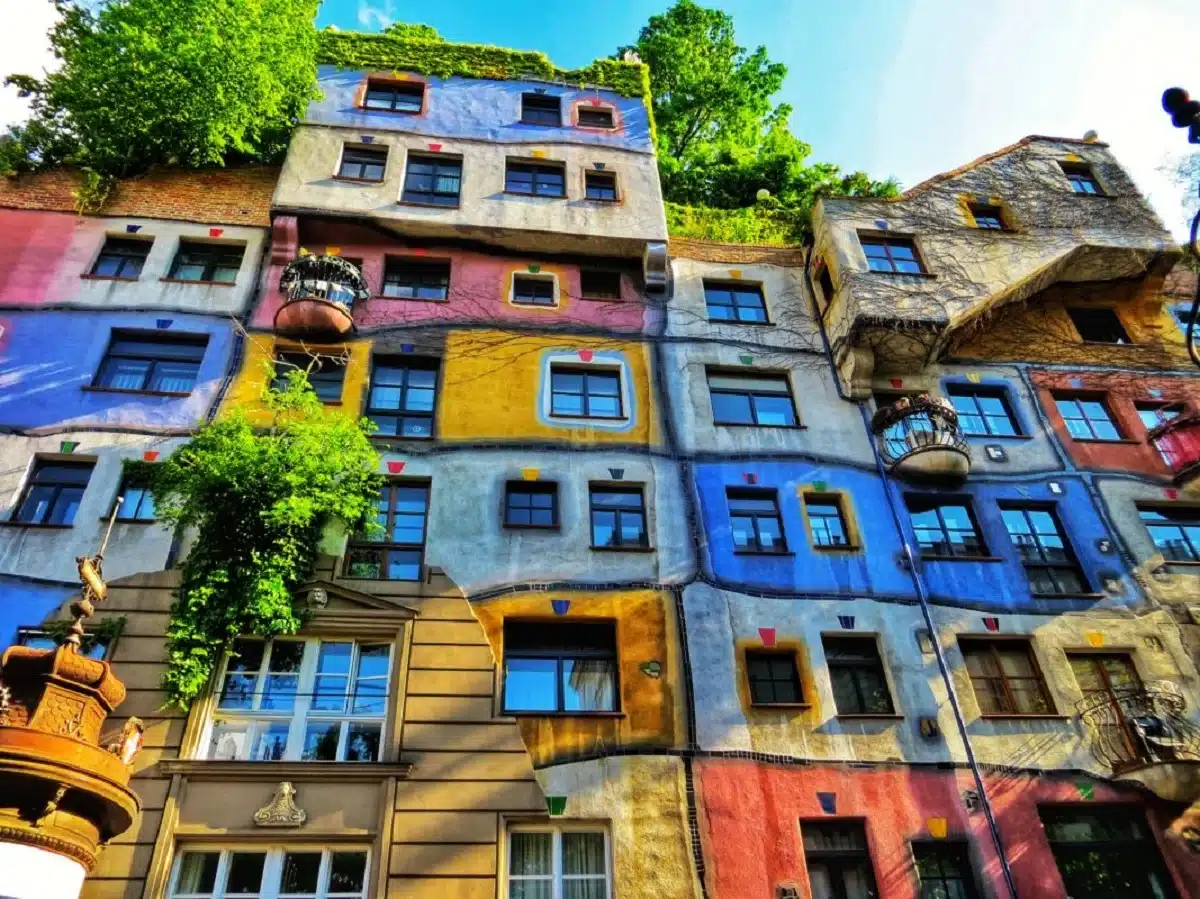
Hundertwasserhaus is a unique and colorful apartment building in Vienna, designed by Austrian artist Friedensreich Hundertwasser. Constructed in the early 1980s, this structure is renowned for its departure from traditional architectural norms and has become one of Vienna’s key tourist attractions.
Design Features
- Hundertwasserhaus features a design where straight lines are eschewed in favor of organic forms and natural elements, distinguishing itself with asymmetric windows, colorful facade designs, and undulating floors.
- The building and its surroundings are abundant with plants and trees, imbuing the structure with a garden or forest-like ambiance. Hundertwasser was passionate about integrating nature into architecture.
- The facade is enhanced with panels painted in various colors, mosaic details, and a diversity of materials, offering rich visual appeal.
Location and Access
- Located in Vienna’s 3rd district (Landstraße), Hundertwasserhaus is easily accessible from the city center.
- While the building is not open for internal tours, it can be viewed and photographed from the outside. Adjacent to the building, the Hundertwasser Village shopping center and café are decorated in Hundertwasser’s style and open to visitors.
Cultural and Touristic Significance
- Hundertwasserhaus stands as one of Vienna’s architectural and artistic landmarks, epitomizing the city’s alternative architectural vision.
- The building reflects Hundertwasser’s commitment to ecological and aesthetic values, demonstrating how art can be integrated into living spaces.
- Annually, thousands of tourists visit Vienna to see this unique structure and experience Hundertwasser’s vibrant, eco-friendly architectural approach.
Hundertwasserhaus is notable for offering a living space that foregrounds nature, color, and human creativity, distinguishing itself from conventional building designs and marking it as a must-visit site in Vienna.